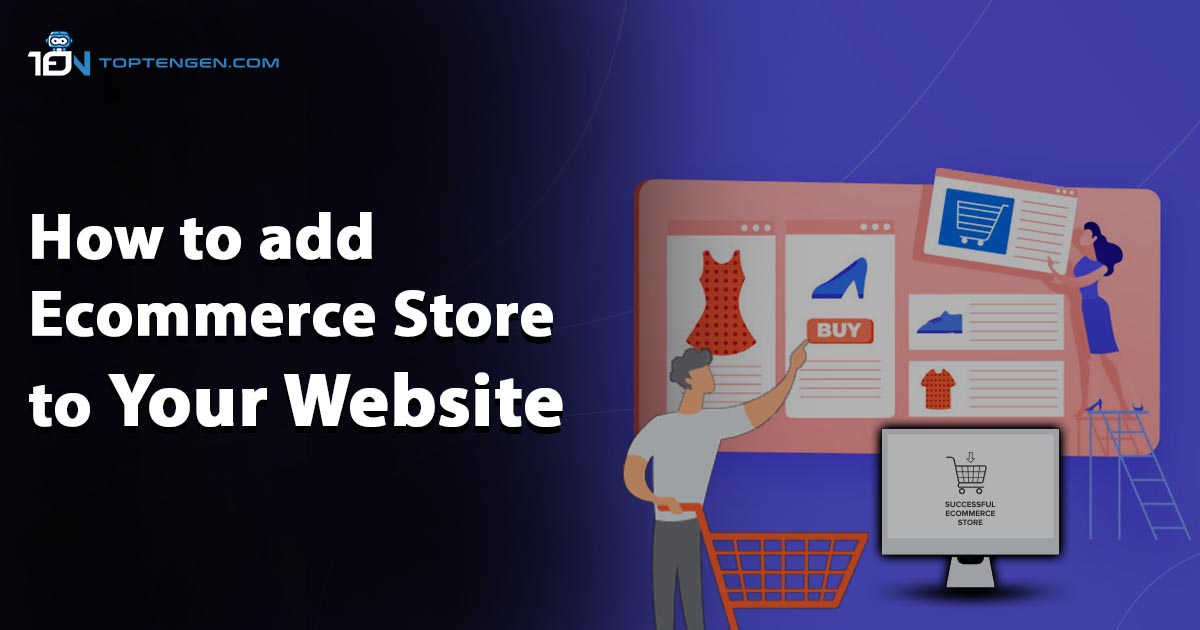Do you want to start your own online store? We know that building an online store can be a terrifying thought, especially when you are not techy. Well! You are not alone. After helping hundreds of users start their online store, we’ve decided to create the most comprehensive guide of 7 Basic Steps to Add e-commerce Store to Your Website.
7 Basic Steps to Add e-commerce Store to Your Website
Here’s the 7 Basic Steps to Add e-commerce Store to Your Website:
1. Choose your content management system

Content management system is a foundation of every website. You have different open-source systems like WordPress or website builders like Shopify or Squarespace.
To decide which one is best for your online store, think about how much money you have, how familiar you are with these things, and what exactly you need for your online business.
Here are the most popular content management systems for e-commerce websites:
- WordPress:
- Shopify
- Squarespace
- Wix
To decide which is the best CMS for your ecommerce needs, learn about best ecommerce website builders.
2. Create an Account

After picking the CMS, the next step among 7 Basic Steps to Add e-commerce Store to Your Website is to make an account (unless you are using WordPress). If you decide to use WordPress to build your online store, next you must buy a special plan for hosting your website online. The best hosting services offer a free domain name, a free SSL certificate and one-click WordPress installation. This saves you from the hassle of manually linking your domain and hosting to WordPress.
3. Select an e-commerce theme or template

Select an e-commerce theme or template is one of the 7 Basic Steps to Add e-commerce Store to Your Website. Start making your website by choosing a theme or template for your website. Themes are the pre-designed templates that give your website a consistent look. It doesn’t matter if you’re using WordPress, Shopify, Wix or another platform to build your online store, you’ll find plenty of ready-to-use templates or themes to choose from.
Shopify
Shopify powers more than a million online stores, making it one of the most trusted ecommerce platforms available. It’s a dedicated ecommerce platform, meaning it comes with all the tools to run an online business, whether you have 10 customers or a million.
Shopify has a 14-day free trial with five pricing tiers, depending on the size of your store:
- Shopify Lite: $9/month
- Shopify Basic: $29/month (this is their most popular plan)
- Shopify: $79/month
- Advanced Shopify: $299/month
- Shopify Plus: starts at $2,000/month
Wix
Wix helps millions of people create all kinds of custom websites, but for the sake of this article, we’ll focus on Wix’s e-commerce capabilities.
As you’ll see with the following pricing plans, Wix e-commerce is slightly less expensive than Shopify:
- Business Basic: $23/month
- Business Unlimited: $27/month
- Business VIP: $49/month
Wix is ideal for small businesses or individual sellers with a few products. However, if you want more tools and resources to scale your business, Shopify might be a better option.
4. Customize your site and build out web pages

After finding the perfect template for your e-commerce store, the next step from 7 Basic Steps to Add e-commerce Store to Your Website is to make it unique by customizing it. This way, you can update the top and bottom parts of your site, set up the site’s menu according to you, and create different pages from your homepage to the pages about refunds and return policy page.
5. Create product listing

In any ecommerce store, showcase your products is one of the 7 Basic Steps to Add e-commerce Store to Your Website. So, once your website is ready, the next step among 7 Basic Steps to Add e-commerce Store to Your Website is to build a catalog of all the things you’re selling. This involves making separate listings for each product. When you do this, make sure to arrange and group your listings to make it easy for people who visit your site to find what they’re looking for. And of course, it should also be easy for you to manage everything.
6. Set up payment gateway

Many online sellers use third-party tools like Stripe or PayPal to make transactions easier and safer. But, if you send customers to other websites for payment, you must ensure all the information is fully encrypted before transfer. It is also one of the 7 Basic Steps to Add e-commerce Store to Your Website
Integrate shipping
If your platform allows integrate shipping, you must connect shipping to your online store to make things smooth. This simplifies the tasks so you can focus on selling. But before integrating shipping, determine your shipping policies such as free shipping, variable fee, flat rate, etc.
Add a sales tax calculator
Also, you can add a tax calculator. This tool can figure out the sales tax, shipping costs, and any other charges automatically when customers are checking out and consider as one of the 7 basic steps to add e-commerce store to your website.
7. Test and Launch your E-commerce site

Before launching your ecommerce site for your customers, you need to check your site thoroughly. Make sure every button and link on the site is working properly. Conduct test to ensure you can add products to the cart and go through the payment process easily. Usually, you can try this without actually using credit cards. Also make sure to see all the emails are getting sent to the right inboxes when a purchase is made or declined. At last, check how your site looks and functions on mobile devices. It is one the last steps among 7 Basic Steps to Add e-commerce Store to Your Website.



